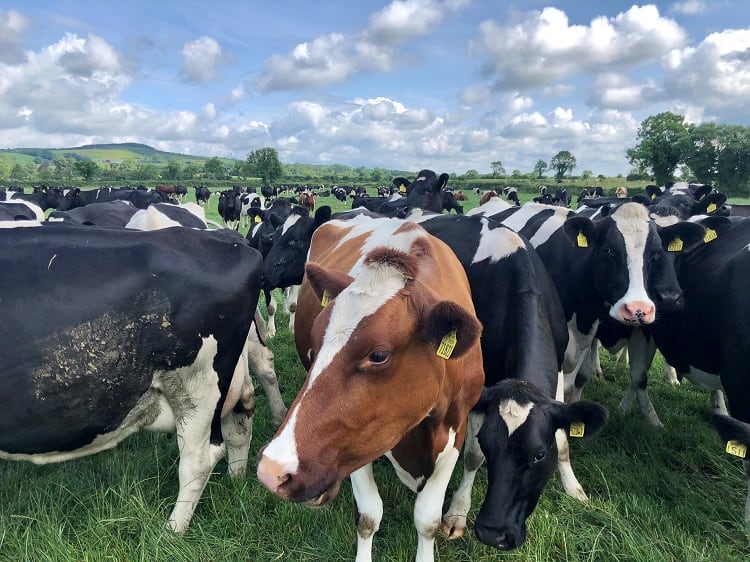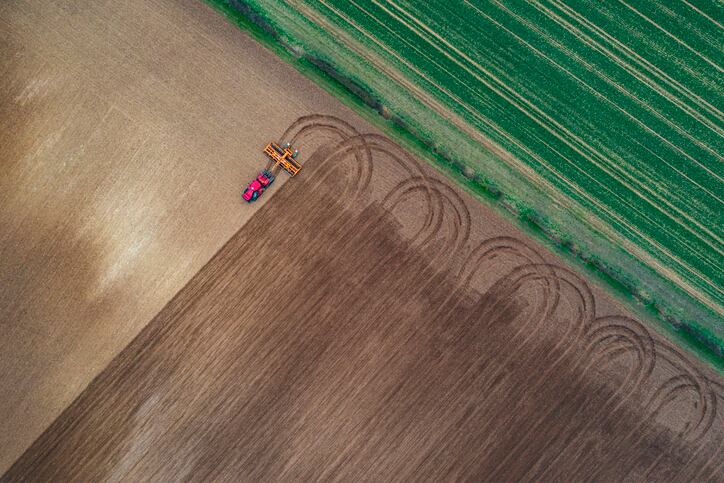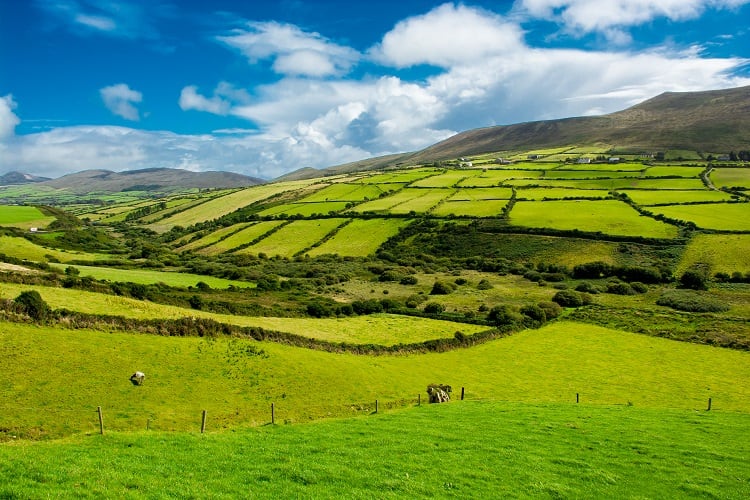Ireland has unique conditions – temperate climate, abundant rainfall, and a tradition of family farms passed down through the generations – that makes it well suited to feeding its cows a steady diet of luscious green grass.
Grass-fed dairy has unique benefits, both to consumers and the farmers producing it, especially compared with other feeds such as soy.
Pure colour
“You have to look at the butter,” said Eamonn Lonergan, who runs Knockanore farm with his son Ed. “You can see a white one is produced indoors. But there's nothing like the grass, the green grass that we grow, to produce this lovely yellow colour.”
Grass-fed butter and cheese is, unlike dairy products from cattle fed on concentrated feeds, naturally a golden yellow colour.
“The colour of our cheese got better and better as it warmed up,” continued Lonergan, “because it's almost like the grass was jumping out at you, you know, and it's because it's produced grass-fed. Pure grass-fed.”
The colour of the cheese is due to beta-carotene, a pigment that is found in grass-fed dairy products.
“If it's . . . dairy cows on concentrates there'd be absolutely zero colour in the cheese. If it's fed with grass fed it'll be always yellow,” Sean Hogan, a researcher at Teagasc Moorepark research centre, told FoodNavigator.
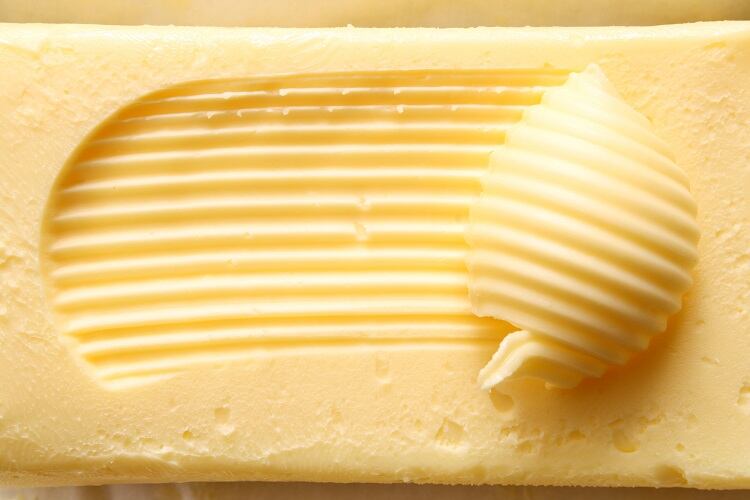
At Moorepark, beta-carotene is added to cheese from cows fed with concentrated feed to provide it with colour. “With concentrates it'd be pure white unless you added beta-carotene,” added Hogan. However, this is unnecessary with cheese from grass-fed cows, which takes on the colour naturally.
Nutrients abundant
It’s important to keep track of the length and abundance of the grass cows eat, because it helps them a lot. “Last year we invested in a piece of equipment that measures grass for us or allows us to measure grass accurately,” said Knockanore farmer Ed Lonergan.
“Nowadays farmers are advised to be measuring grass once a week or even more often so that you're staying up to date and you're being as sustainable as possible, because the more grass you can get into cows' diets, the more they're outside, the less you're feeding.
“So you know it's good for the cow, it's good for the farmer, it's good for the environment as well.” Environmental benefits come from the relative sustainability of grass compared to feeds such as soy, a known contributor to deforestation.
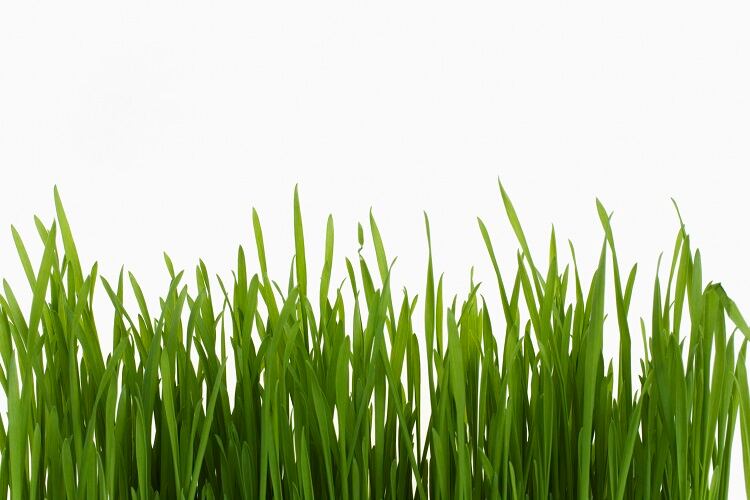
Ensuring cows get fresh grass, not ‘stemmy’ grass, also improves their health, in turn maximising milk yield. “That's why grass measuring has become so important for Ed and all Irish dairy farmers,” said Eamonn. “You have to stay on top of how your grass is going and also stay on top of the nutrients that your cow is getting,” added Ed.
While traditional feed such as soy and rapeseed are higher in protein, grass provides the cow with a lot of the nutrients they need.
“If [a farmer] wants to put in extra soya, it's going to cost him more money [and give him a] higher carbon footprint so we're trying to reduce it, and you don't need it because there's loads of protein in the grass,” said John Kerrisk, Area Sales manager for Kerry Foods.
Saving money
Grass is abundant, and cheap. Compared with silage, which Arthur O’Leary, a farmer at Kerry Foods Farm, estimates costs around 16 cents per kilo, and concentrated feed which would cost around 32 cents per kilo, grass costs roughly 8 cents per kilo.
Furthermore, grass, when turned into silage, loses energy content, making it less efficient as a fuel for cows. This means that grass is both cheaper and more efficient than sileage.
“So what will you feed your cows? You'll feed fresh grass,” Kerry Foods Farm’s Conor O’Leary said. “That's the financial figures behind it, that's the real driver of the grass-based system, so for farmers using sileage, too much sileage or concentrated feed, unfortunately, is not making money.”
“It just cuts down on expense,” added Arthur, “it's just so much cheaper to produce the milk off the grass. If we have to keep [the cows] inside feeding them concentrates and stuff like that, they're inside for longer, while they're inside they're producing slurry, that slurry has to be put back out in the fields again which is an extra cost. So the shorter they're inside, the more profitable it is for us.”
Having an abundance of grass also kills two birds with one stone, as they can squirrel away some stemmy grass for the winter months where cows are not grazing. Concentrated feed will sometimes be resorted to in bad times, but it’s not something farmers like to do.
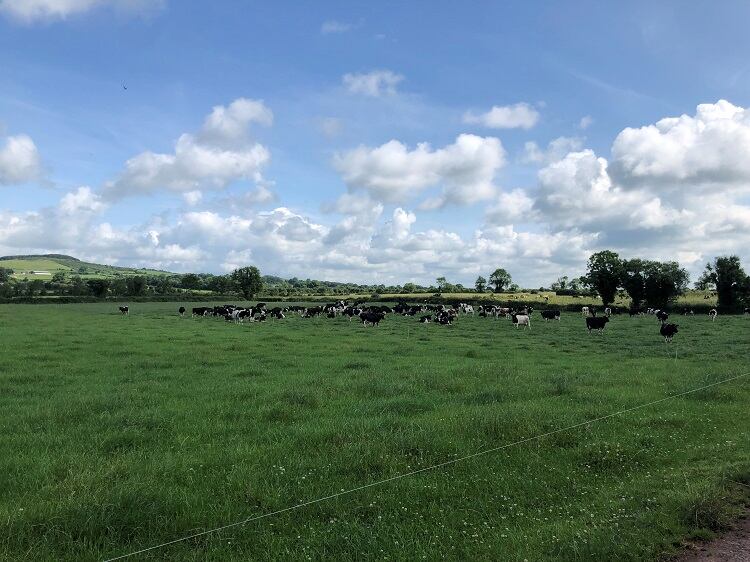
“If you get a drought or you get bad weather,” said Kerrisk, “you might have to feed extra concentrated feed, but if you're feeding extra concentrated feed at 32 cents a kilo vs. 8 cent a kilo, a kilo's costing you money.”
High standards
To ensure that Ireland’s reputation for grass-fed dairy remains intact, Bord Bia, the Irish Food Board, conducts a Grass Fed Standard to ensure there is evidence to support any claim a manufacturer makes that its livestock is grass fed.
Milk approved by the standard must be produced on farms certified by Bord Bia, and each farmer must undergo an audit to ensure that they fit the criteria. The auditor will both observe the production process of the milk, and look through records to ensure the cows are grass fed. This will be followed by surveillance audits at least once every 12 months.
The minimum grass-fed figure for a group of herds to qualify is 95%, and for an individual herd 90%. Animals must be allowed to graze outdoors for the majority of the year. No grass-fed product must be mixed with non-grass-fed product.
Grass Fed Standard labels the product as grass fed, certifying that the cows have undertaken a grass-based diet.


